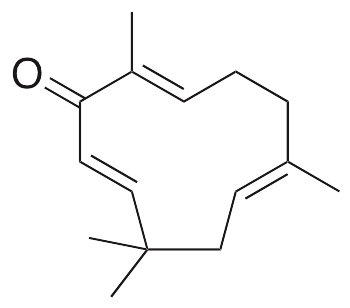Description
Zerumbone is a cyclic sesquiterpene compound found in ginger root. Zerumbone exhibits a wide variety of beneficial properties, including anti-hyperlipidemic, anticancer chemotherapeutic, anti-angiogenic, antioxidative, antinociceptive, and anti-inflammatory activities. In an animal model of nonalcoholic fatty liver disease, zerumbone upregulates expression of PPARα and enzymes involved in lipid oxidation and downregulates expression of fatty acid synthase and lipogenic genes, resulting in decreased total cholesterol and triglyceride levels in plasma and improvements in lipid sensitivity. In several cancer cell lines, zerumbone inhibits expression of VEGF and activity of IKKα and NF-κB and activates caspases 3 and 9 and cleavage of poly(ADP)-ribose polymerase (PARP), resulting in apoptosis and decreased cellular proliferation. In both cellular and animal models, this compound displays antioxidative benefit, activating Nrf2 and increasing expression of heme oxygenase 1 (HO-1), resulting in decreased levels of reactive oxygen species (ROS). In vivo, zerumbone exhibits antinociceptive characteristics and is thought to act through L-arginine-NO-cGMP-PKC-K+ channel pathways and TRPV1 channels. Zerumbone also decreases paw edema and granulomatous tissue formation in animal models of inflammation.
